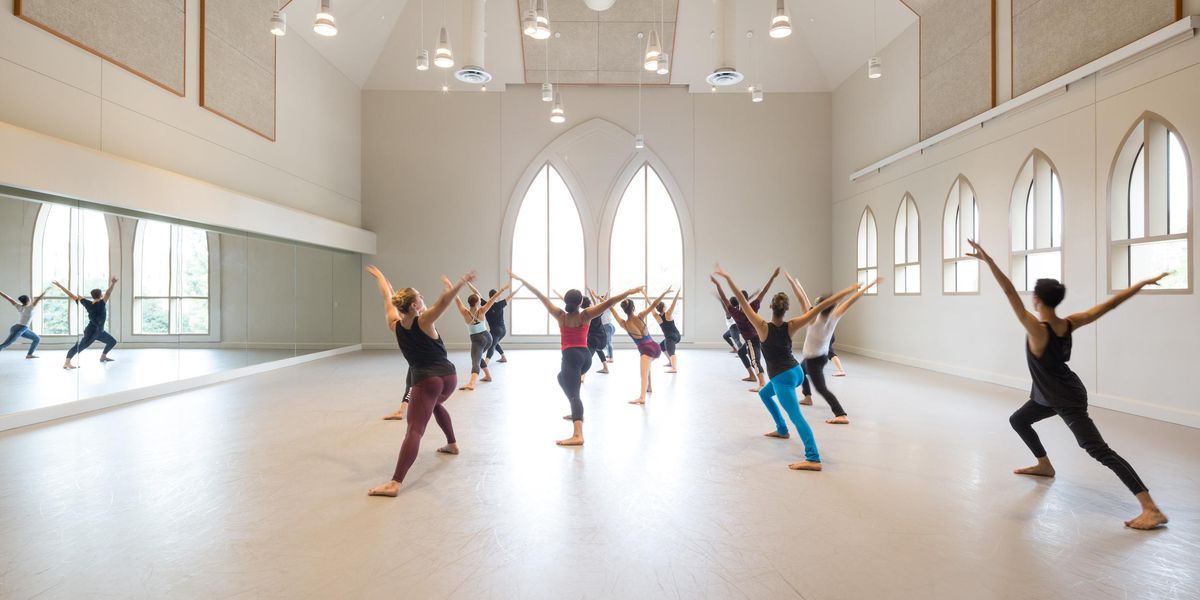Even Dark Stories Need Dance
How Andrew Palermo brought movement to a musical about World War II internment camps.
One of Allegiance‘s lighter scenes. Photo by Henry DiRocco, courtesy The Old Globe.
As last season began winding down, it looked as though dance musicals had come roaring back to Broadway, with choreography front and center in shows like The King and I, On the Town and An American in Paris. But when the Tony Awards were distributed, the big winner was Fun Home, a dazzling musical with a choreographer (Danny Mefford), a dance captain (Joel Perez) and virtually no dance.
Broadway audiences know that this isn’t exactly new. For years, hit musicals, even a few great ones, have been minimizing, if not dispensing with, full-blown dance numbers. “Everything goes in waves,” says Randy Skinner, who has always specialized in what he calls “dance-driven” musicals, and who is directing and choreographing yet another, Dames at Sea, opening this month. But you won’t catch him bemoaning the limited-dance productions that keep arriving. “There’s a place for both,” he says. “There’s chocolate and vanilla, there’s apples and oranges, there’s room for everything. The worst thing is when you try to impose dancing on a show that doesn’t need it.”
Michael K. Lee and Lea Salonga dance. Photo by Henry DiRocco, courtesy The Old Globe.
At first glance, Allegiance, which begins previews this month, would seem not to need it, with its dark story of a Japanese American family caught up in one of the more shameful episodes in American history, the mass arrests and internment of our Japanese population after Pearl Harbor. Suggested by the World War II experiences of the family of actor George Takei, best known for his work in “Star Trek,” Allegiance is set in one of the camps as several generations of internees, among them American citizens both native-born and naturalized, cope with being imprisoned as enemies by their own country. Stressed-out and conflicted, they seem unlikely to break into dance.
Indeed, when the show opened in 2012, at San Diego’s The Old Globe, with choreography by Andrew Palermo, dance numbers were few and far between. But it has changed a lot, says Palermo, who is making his Broadway debut as a choreographer with this revamped version. He had joined director Stafford Arima’s team three years ago, when the show had already been “percolating” for several years, and he inherited a structure without predetermined dance slots and a cast comprising “primarily actor-singers.”
Like Skinner, Palermo underlines the idea that a choreographer’s job is to be “sensitive and appropriate” to the subject matter at hand. “For Allegiance,” Palermo says, “I didn’t want to shoehorn in big, splashy dance numbers if it didn’t make sense.” For the San Diego production, he devised a Saturday-night dance for the internees and a military drill for the ones enlisting—as many did—in the U.S. Army.
The show went back to the drawing board for a lab production in New York the following year. Palermo was delighted—“I said ‘hooray!’ ”—when the feedback from industry insiders urged “More dance! More movement!” Adding dance was possible, he says, because, “these internees had to find ways of breaking the tension.” So there’s a new baseball number, and a celebration when they hear that Japan has surrendered. The choreography draws from ballroom boogie-woogie and swing dance, which, Palermo says, is a challenge for his 12-member ensemble. “A lot of the partnering is a little bit counterintuitive to trained dancers, different from what we’re used to. I’m encouraging my cast to get some lessons. You can be working with Baryshnikov, but if he’s never done that style before, it’s definitely a learning curve.” Other elements alluded to in the dance sequences are martial arts, military drill-team moves, contemporary concert dance, traditional Japanese gesture and, of course, baseball. “Now,” Palermo says, “I don’t think of it as a show that doesn’t have dance.” And neither will anyone else.
George Takei of “Star Trek” fame. Photo by Henry DiRocco, courtesy The Old Globe.
Palermo’s Big Break
Andrew Palermo’s path to Broadway began when he was 5, saw Fred Astaire and decided he wanted to dance. The local ballet studio, near Rochester, New York, didn’t take boys, but his mother enrolled him in a neighboring town. He went on to Rochester’s School of the Arts and then the University of Cincinnati, where he earned his musical-theater degree. He quickly augmented his Broadway performing career, which included Wicked, Annie Get Your Gun and How to Succeed in Business Without Really Trying, with choreography. When he moved to Los Angeles, he found himself teaching dance classes with his old high-school classmate Taye Diggs. In 2004, they founded the contemporary company dre.dance. “I love to bring concert-level dance into theater as much as possible,” Palermo says. He likes mixing genres in his work and his life—he’s also an assistant professor of drama at University of California, Irvine. “I try to be as bicoastal as I can,” he says. “Right now it’s the best of both worlds.”




